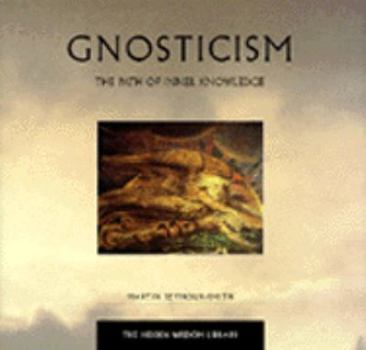Gnosticism: The Path to Inner Knowledge
Select Format
Select Condition 
Book Overview
No Synopsis Available.
Format:Hardcover
Language:English
ISBN:0062513052
ISBN13:9780062513052
Release Date:January 1996
Publisher:HarperOne
Length:61 Pages
Weight:0.51 lbs.
Dimensions:0.5" x 7.0" x 6.8"
Customer Reviews
1 rating
The Living Path of Inner Knowledge
Published by Thriftbooks.com User , 17 years ago
This beautiful little book is a marvelous introduction to Gnosticism. The many superb illustrations are perfectly integrated with the text for art can indeed speak directly to the forces of the unconscious. So you have a perceptive text appealing to your conscious mind, while the illustrations attempt to penetrate by way of the unconscious. Gnosticism was the school of spiritual philosophy that flourished in the Greco-Roman world that focused on the attainment of gnosis (divine knowledge intuitively accessed)- as opposed to the focus on faith, good deeds, and contrition of orthodox Christianity. Indeed Gnosticism may have been the original "Christianity" for orthodox Christianity seems to owe its structure to opposition to the Gnostic principles. As the author perceptively points out, the Gnosticism of the first two centuries were anathema to orthodox thinking because it revealed the essential materialism of the latter. This reminds us of what Voltaire said about Machiavelli: the so-called moralists hated him not because he was wicked, but because he exposed their trade secrets... There was never a single monolithic Gnostic creed, but certain tenets do seem to have been more or less held in common. There was the principle of gnosis- a different kind of knowledge of higher things obtained by direct intuition (based of both making oneself worthy to receive it, as well as, divine grace.) Contrary to what traditional critics state, this type of knowledge was open to anyone- the only "secret" was individual worthiness. There was also the concept that we all contain particles or sparks of the Creator within ourselves- the purpose of life is to reunite these sparks with their Source. These sparks are also the basis of the concept that to find our connection to God we have to first look within. There is also the idea that the world of creation is fallen and evil, but the corollary to this is that it forces us to deal with the evil and imperfect and thereby accelerate our spiritual growth. Then again reincarnation and cyclic time were also central concepts. The connections with depth psychology are pointed out- as well as very perceptive comments on its connections to existentialism and deconstructionism. It is remarkable that so much philosophical and historical background is packed in such a gem-like package, but then you could claim that of the entire Hidden Wisdom Library (I especially recommend the companion volumes on Kabbalah and Theosophy.)





